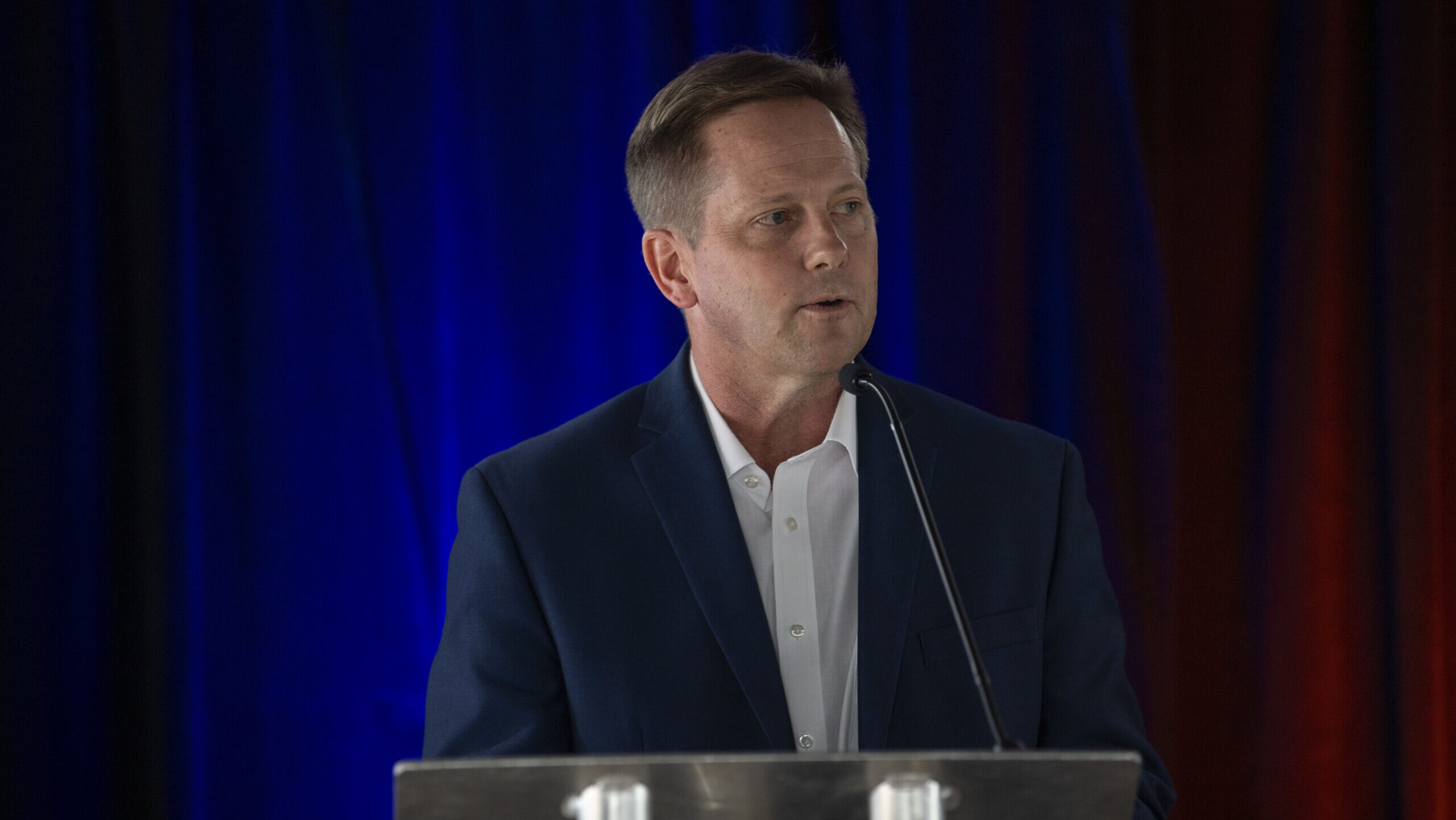
AMOS 2023 — The Space Rapid Capabilities Office (SpRCO) is now “finalizing” a plan to acquire software for command and control (C2) of highly mobile satellites and spacecraft being envisioned for future “dynamic space operations,” according to Director Kelly Hammett.
SpRCO is building the “acquisition requirements” for the Rapid Resilient Command and Control (R2C2) program based on feedback gathered from “a number of industry days [and] a number of RFIs [requests for information],” he said in a Sept. 22 presentation at the annual Advanced Maui Optical and Space Surveillance Technologies (AMOS) Conference.
R2C2, a combined effort by SpRCO and Space Systems Command (SSC), is aimed at developing a “software and cloud based architecture that lets us synchronize [maneuvering] assets for potential conflict” in geosynchronous Earth orbit, Hammett told Breaking Defense in an interview after his presentation. “We’re the last tactical mile of C2. We’ll actually go out to the antennas, [and] command and synchronize movements once the overall operational plan has been laid out.”
SpRCO, headquartered at Kirtland AFB in New Mexico, is a semi-independent acquisition organization created by Congress in 2018 to take requirements directly from operators at US Space Command and find ways to quickly get capabilities, including cutting-edge commercial tech, into the field. SSC, headquartered in Los Angeles, is the Space Force’s major acquisition command.
The idea, Hammett said, is to ensure that operators have a “common operating picture,” and a “common user experience” in handling new types of satellites and spacecraft that can rapidly and efficiently maneuver to “take actions” in the face of hostile activity — for example, to keep close eyes on similarly mobile adversary satellites or to get out of the way of anti-satellite missiles.

R2C2 was launched by Air Force Assistant Secretary for Space Acquisition and Integration Frank Calvelli in February. It replaces two previous programs to develop common C2 ground systems:
- SpRCO’s Ground Command, Control and Communications, or GC3, program launched in 2020 to develop a software-based ground system that any Defense Department satellite could plug into; and,
- SSC’s Enterprise Ground Services, or EGS, program that grew out of a 2018 effort by then-head of Air Force Space Command, Gen. Jay Raymond, to develop a unified C2 ground system for all military satellites. EGS was one of a handful of ground systems programs that Calvelli judged as seriously underperforming in his efforts to improve Pentagon space acquisition.
The key problem for EGS, Hammett told Breaking Defense, was that it “tried to boil the ocean” by seeking to integrate satellites for all the different Space Force missions at the same time. R2C2 is instead starting small, he explained, focusing on systems designed for “dynamic space operations.”
Besides missions focused on countering adversary space activities, dynamic space operations also include what SPACECOM officials call “space mobility and logistics” missions such as on-orbit servicing and repair, satellite refueling and space junk cleanup.
Then, the next step will be to figure out how to “scale up” to build C2 software tools to accommodate different mission sets, Hammett said.
Another future challenge for the program will be figuring out how it fits under the Pentagon’s overarching Joint All Domain Command and Control (JADC2) efforts, Hammett noted, especially how sensor data from the JADC2 network about adversary space activities flows into the R2C2 system so operators know what they need to do.
“We need to connect the rest of that,” he said.